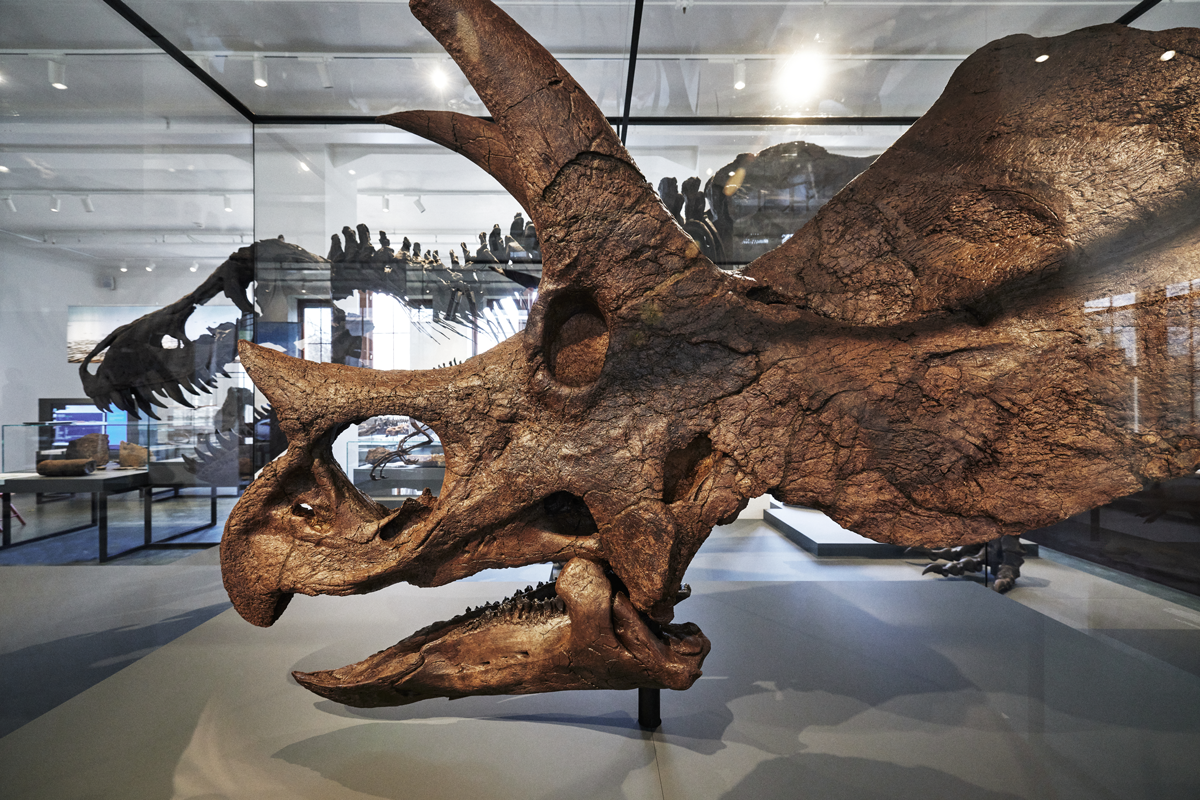67 million years ago the Triceratops "Roar" roamed about on alluvial plains of North-America alongside other well-known dinosaurs of the Cretaceous, such as the Tyrannosaurus.
Our new fossil attraction is named after Roar Løvviken, a local Oslo resident. Instead of investing his savings in a brand new car or motorcycle, Løvviken decided to buy and donate a dinosaur fossil to the Natural History Museum – to the joy of all our visitors.
Triceratops is one of the most iconic dinosaurs with its characteristic three horns and massive neck frill – probably a dinosaur name most people are familiar with.
Roar was found in the Hell Creek Formation in South Dakota (United States), an area especially known for its richness of dinosaur fossils. During the excavation scratch marks were found on Roar, and also a Tyrannosaurus tooth was uncovered at the site. We will never know whether the two individuals were in fight – most probably Tyrannosaurus preferred smaller prey. The gnaw marks might have originated from animals preying on Roar after his death.
Roar is displayed next to our Tyrannosaurus Stan in our geological exhibitions.
Facts about Roar
- Roar is a Triceratops prorsus
- Roar is the only original dinosaur skull in Norway, meaning that it is not a cast model. The skull is 80% real, only the outer parts of the frill has been reconstructed. The skull is one of the world's finest specimens of this species.
- Roar is named after the donor of the fossil Roar Løvviken.
- Roar had a large neck frill and three large horns on its head.
- Roar lived 67 million years ago in what we today know as South Dakota, USA. The skull is two meters long, and the horns above his eyes are about one meter.
- Roar was about six meters long.
- Roar was a plant eater. Triceratops' had a beak-shaped mouth to cut plants and many teeth in their inner jaws for grinding.
- The fossil was found in 2013 and dug out in 2016 by the private research institute Black Hills Institute.
- The fossil was found in Hell Creek Formation, and area with sandstone and clay deposits that is especially known for its richness of dinosaur fossils. The area encompass parts of present day Montana, Wyoming, South Dakota and North Dakota.
